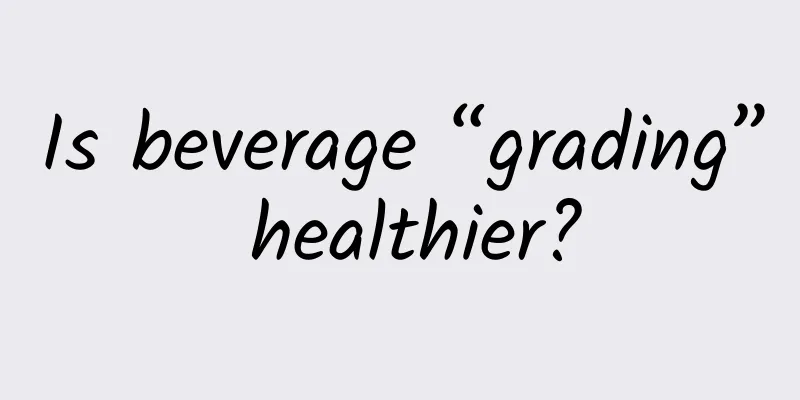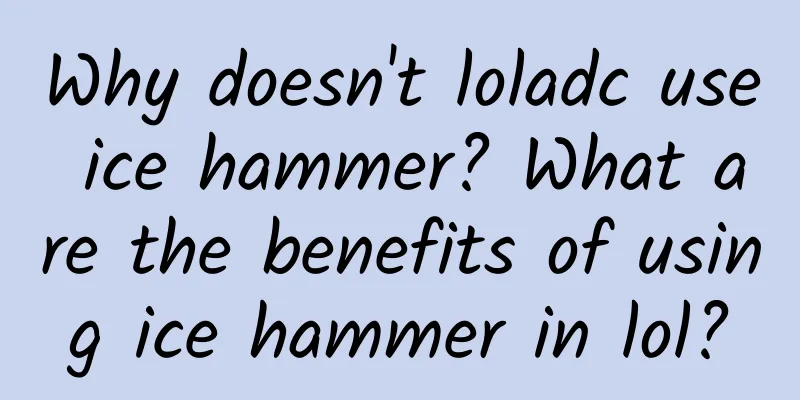Is beverage “grading” healthier?

|
□ Ruan Guangfeng In order to help consumers better understand the nutritional value of beverage products, Shanghai launched a new initiative of "Nutritional Choice" beverage classification labeling on March 26, and carried out a pilot in four companies. This initiative immediately aroused heated discussions among netizens. Is this "Nutritional Choice" classification labeling scientific and reasonable? Is it more conducive to people's accurate consumption and healthy diet? Understanding the Nutritional Choice Grading Label The Shanghai Beverage "Nutritional Choice" grading label is a graphic label that allows consumers to see the nutritional configuration of food at a glance. Its purpose is to help consumers make accurate, quick and rational choices when purchasing food. No more than 0.5 grams is Grade A, between 0.5 grams/100 ml and 5 grams/100 ml is Grade B, between 5 grams/100 ml and 11.5 grams/100 ml is Grade C, and over 11.5 grams/100 ml is Grade D. Among them, 0.5 grams/100 milliliters is the limit for pre-packaged foods to claim "sugar-free" as stipulated in my country's current national standards, 5 grams/100 milliliters is the limit for pre-packaged foods to claim "low sugar" as stipulated in the national standards; and 11.5 grams/100 milliliters is the boundary for high sugar in my country's dietary guidelines, which consider beverages with a sugar content ≥11.5 grams/100 milliliters to be high in sugar. The two limit values for saturated fat are 0.75g/100ml and 2.5g/100ml. For trans fat, the limit required for Grade A and Grade B is ≤0.3g/100ml, which is also the limit stipulated in the current national standard for claiming to be free of trans fatty acids. The "non-dairy sugars" in the "Nutritional Choice" classification label means sugars that are not lactose. Lactose mainly comes from milk, which means that the lactose in milk does not count. Non-sugar sweeteners refer to what we often call sugar substitutes and sweeteners, such as erythritol, aspartame, acesulfame potassium, etc. In short, beverages with less sugar, no sweeteners, less fat, saturated fat, and trans fat are Class A and Class B products. Is the nutritional classification of beverages scientific? Regarding the "Nutritional Choice" grading label, some people think it is a good attempt, which will help people understand the nutritional value of beverages more quickly when purchasing them. Others think it is a formality and is not very helpful for health. So is it scientific? First of all, the original intention of the "Nutritional Choice" grading label is to make people consume healthily and make more accurate choices. From this point of view, its emergence has positive significance. However, there may be misjudgments in grading. For example, pure freshly squeezed fruit juice has a sugar content of more than 5%, and many are more than 11.5%, and are basically classified as Class C or Class D. The saturated fat content of whole milk is about 1.86 grams/100 milliliters, which will be classified as Class B or Class C. And a coffee or milk tea with milk, if more milk is added, may be rated as Class B or Class C because it contains saturated fat. You can see in this grading mark that Americano is Class A, but some lattes are Class C. In fact, latte is coffee with a little milk added. From a nutritional point of view, it is healthier than Americano. After all, milk contains calcium and can make up for the loss of calcium. In addition, the classification label also specifically points out that only those that do not use non-sugar sweeteners can be grade A, which means that as long as sugar substitutes are used, they cannot be grade A. However, the "Healthy China Action (2019-2030)" clearly states: "Study and formulate guidelines for the limited intake of added sucrose for children in my country as soon as possible, and advocate the use of natural sweeteners and sweeteners as alternatives to drinking." "It is recommended that people in cities with high sugar intake reduce their consumption of sucrose-containing beverages and sweets, and choose natural sweeteners and sweeteners to replace sucrose-produced beverages and foods." In fact, food sweeteners are a commonly used food additive, and all approved food sweeteners are safe. Drinking water or tea without sugar is of course the healthiest, but if you want sweetness without sugar, sugar substitutes are still the best alternative. After all, we have another important need when eating and drinking - to enjoy deliciousness and happiness. Nutritional grading labels can be used as a reference In general, the Shanghai beverage "Nutritional Choice" classification can be used as a reference, but it is not the only standard. You can’t rely on it completely, and you can’t use it as a “talisman” or “shield” for your health. If you think you’re healthier by choosing A or B, you can let yourself go and eat desserts, braised pork, and fried chicken, but in the end, it may not be that healthy. As a nutritionist, I still want to remind everyone that we should consider various factors comprehensively, combine our physical condition and needs, and reasonably arrange our daily diet and life. The basic principle of healthy diet is to match food reasonably and eat in moderation. Under the premise of moderation, you can still enjoy delicious milk tea, beverages, etc. While enjoying delicious food, you should also pay attention to maintaining moderate exercise! (The author is the deputy director of the Kexin Food and Health Information Exchange Center and a member of the expert committee of the China Internet Rumor Refutation Platform) |
<<: Norovirus: Know it and prevent it!
Recommend
Urethra pain after urination during confinement
Having a baby is a great test for women, both phy...
What medicine should women use for knee pain
Knee pain and swelling are usually caused by arth...
【Smart Farmers】The World of Beans: Exploring the Secrets of a Nutritional Treasure House
Beans are a popular food that is not only delicio...
Can a tumor cause amenorrhea? Authoritative experts will answer you
Tumors are very serious diseases that may occur i...
"The first fruit of winter", sweet and sour taste
This is the 4718th article of Da Yi Xiao Hu "...
Clinical manifestations of pelvic varicose veins
Pelvic varicose veins are mainly caused by women ...
Are dark circles related to gynecology?
Dark circles are a common condition and are gener...
Contraceptive success rate of withdrawal bleeding
If a woman has withdrawal bleeding after taking b...
2023 National Love Teeth Day Core Message (V) Pay attention to gum bleeding and loose teeth, and prevent periodontal disease
Author: Wang Sisi Siyan, Peking University School...
What is the grading of breast masses?
Breasts are extremely important to women. They ar...
Are wild vegetables all natural and healthy foods?
Wild vegetables, as the name implies, are plants ...
Which part of a woman's body is most likely to develop a tumor?
Breasts are one of the most interesting organs in...
Why am I not pregnant yet?
In life, the inability to get pregnant is troubli...
Is it safe to deliver twins at 32 weeks?
In ancient times, giving birth was a matter of li...
What is hydatidiform mole?
What does hydatidiform mole mean? A hydatidiform ...




![[Smart Agriculture Illustrated] The story behind the successful development of the H7N9 avian influenza vaccine](/upload/images/67f19aaf3fa84.webp)


![[Medical Q&A] How can young people stay away from stroke?](/upload/images/67f0efdc454ad.webp)

